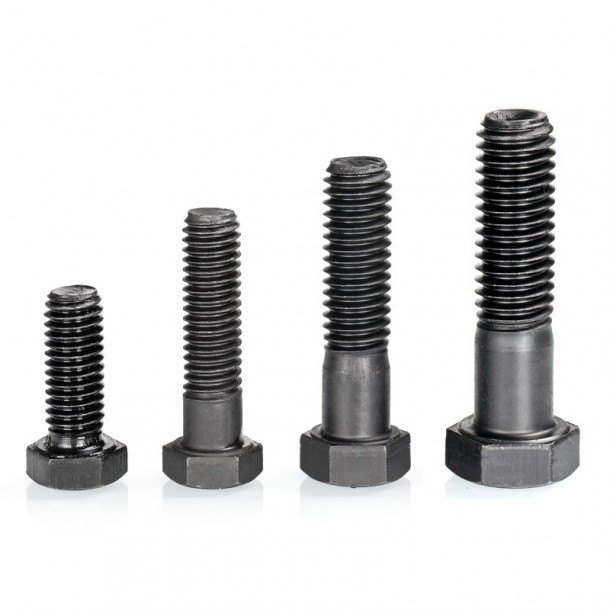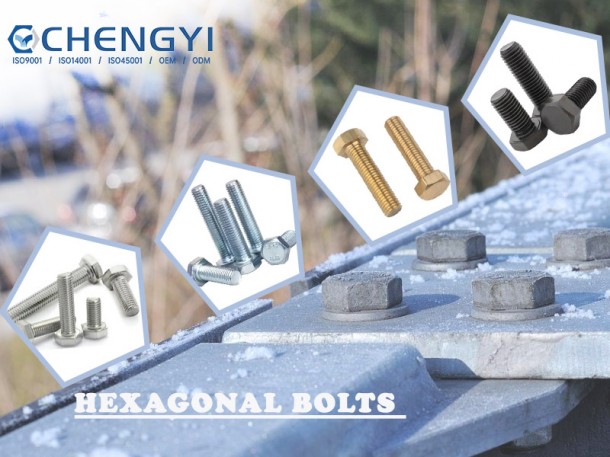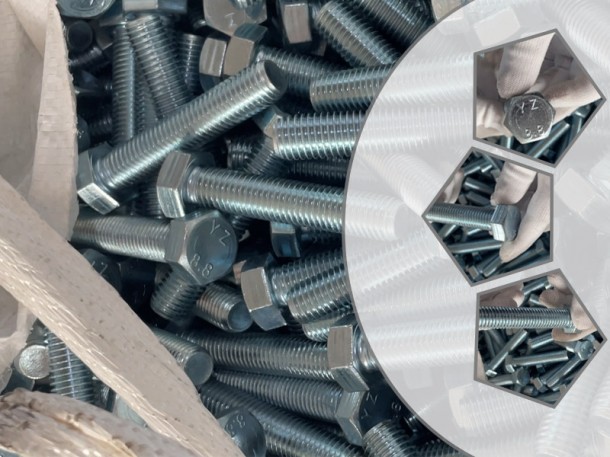1.Concept
An external hexagonal bolt is a metal accessory, also known as an external hexagonal screw, an external hexagonal screw or an external hexagonal bolt.
2.Surface treatment
In the manufacturing process of bolts, surface treatment is one of the indispensable links. It can make the surface of the bolt meet certain requirements and improve its corrosion resistance, strength and aesthetics.
There are many kinds of surface treatment methods for bolts, the common ones are as follows:
Galvanizing: The bolts are immersed in a zinc solution, and the zinc is coated on the surface of the bolts layer by layer through an electrochemical reaction, making them rust-proof and corrosion-resistant.
Hot-dip galvanizing: After the bolts are manufactured, they are immersed in molten zinc liquid, and a zinc layer is formed on the surface through a chemical reaction to achieve anti-rust, corrosion-resistant and other effects.
Blackening treatment: A black metal oxide film is formed on the surface of the bolt through a chemical reaction to improve its corrosion resistance.
Phosphating treatment: Soak the bolt in phosphating solution to form a phosphating film on the surface to improve its corrosion resistance.
Hardening treatment: Through heat treatment or surface spraying, a layer of coating with higher hardness is formed on the surface of the bolt to improve its strength and wear resistance.
The above are common bolt surface treatment methods. Different treatment methods correspond to different application scenarios and requirements. When performing bolt surface treatment, it must be carried out in accordance with corresponding standards and specifications to ensure that the treated bolts meet relevant performance requirements.
3. Level performance
The performance grade label of the external hexagonal bolt consists of two parts of numbers, which respectively represent the nominal tensile strength value and the yield strength ratio of the bolt material.
For example, a bolt with performance level 4.6 means:
a. The nominal tensile strength of the bolt material reaches 400MPa;
b. The yield-strength ratio of the bolt material is 0.6;
c. The nominal yield strength of the bolt material reaches 400×0.6=240MPa level
Performance level 10.9 high-strength bolts, after heat treatment, can achieve:
a. The nominal tensile strength of the bolt material reaches 1000MPa;
b. The nominal yield strength of the bolt material reaches 1000×0.9=900MPa.

4. The difference between ordinary external hexagonal bolts and high-strength external hexagonal bolts
Ordinary hexagonal bolts can be reused, but high-strength bolts cannot be reused.
High-strength bolts are generally made of high-strength steel No. 45 steel (8.8s), 20MmTiB (10.9S), and are prestressed bolts. For friction types, use a torque wrench to apply the specified prestress, and for pressure-bearing types, unscrew the torx head. Ordinary bolts are generally made of ordinary steel (Q235) and only need to be tightened.
Ordinary bolts are generally grade 4.4, grade 4.8, grade 5.6 and grade 8.8. High-strength bolts are generally grade 8.8 and grade 10.9, with grade 10.9 being the most common.
The screw holes of ordinary bolts are not necessarily larger than those of high-strength bolts. In fact, ordinary bolt holes are relatively small.
Post time: Jan-03-2024


